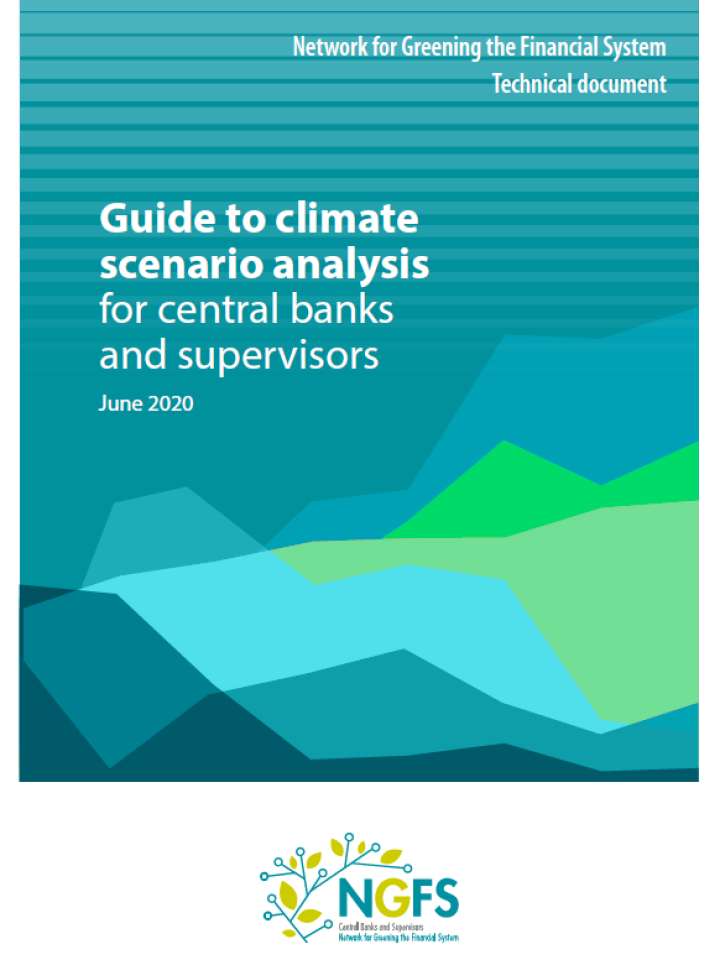Guide to climate scenario analysis for central banks and supervisors
This guide provides practical advice on using scenario analysis to assess climate risks to the economy and the financial system. It is based on the initial experiences of the Network for Greening the Financial System (NGFS) members and observers and also aims to advance the discussion on the methodologies used.
The Guide provides a four-step process. It recognises that this field is still relatively in its infancy and there is no universally agreed approach (pp. 4-5):
- Identify objectives and exposures. Scenario analysis is relevant to many objectives of central banks and supervisors. A materiality assessment can be useful at the outset to help determine the risk drivers that will be in or out of scope.
- Choose climate scenarios. Most publicly available climate scenarios were originally designed for policy evaluation and research, and are therefore not entirely appropriate for central banks and supervisors’ purposes.
- Assess economic and financial impacts: Central banks are interested in assessing the impact of climate risks on a wide-ranging set of economic and financial variables (e.g. GDP, inflation, equity and bond prices, loan valuations) etc.
- Communicating and using results. Communicating the results, and the key assumptions underpinning them will help increase awareness. This may provide a basis for follow-up actions from central banks and supervisors and encourage financial institutions to improve their risk-management practices.
Explore further
